
Il crimine di Lord Arthur Savile (Un saggio sul dovere)
¥4.58
Il racconto narra di Savile a cui, in seguito ad un ricevimento offerto da Lady Windermere dove ad alcuni ospiti viene letto il futuro, un chiromante predice una minaccia imminente: egli stesso sarà l'artefice di un omicidio. Lord Arthur, prossimo alle nozze, crede fermamente nella predizione del chiromante e per evitare di coinvolgere la futura moglie nelle conseguenze del delitto, decide di posticipare il matrimonio e procedere speditamente alla sua realizzazione. Il protagonista risulta molto pratico nell'affrontare i problemi che si ritrova, non si fa remore di infrangere la morale, il destino contro la volontà che non trova resistenza; è questo forse riconducibile al Fato greco - di quella Grecia che Wilde idealizza come epoca felice e quasi perfetta -, superiore persino agli Dèi, e quindi, anche alla mera morale degli uomini. Tema questo, della moralità tradita, che si evolverà poi negli anni, e da un'inevitabile ed imposta scelta "fatale", arriverà ad essere una consapevole volontà del protagonista, e per questo buona solo a portare la rovina - tutto questo, ovviamente, nel Ritratto di Dorian Gray. Disponibile anche in edizione con testo a fronte specifica per eBook.
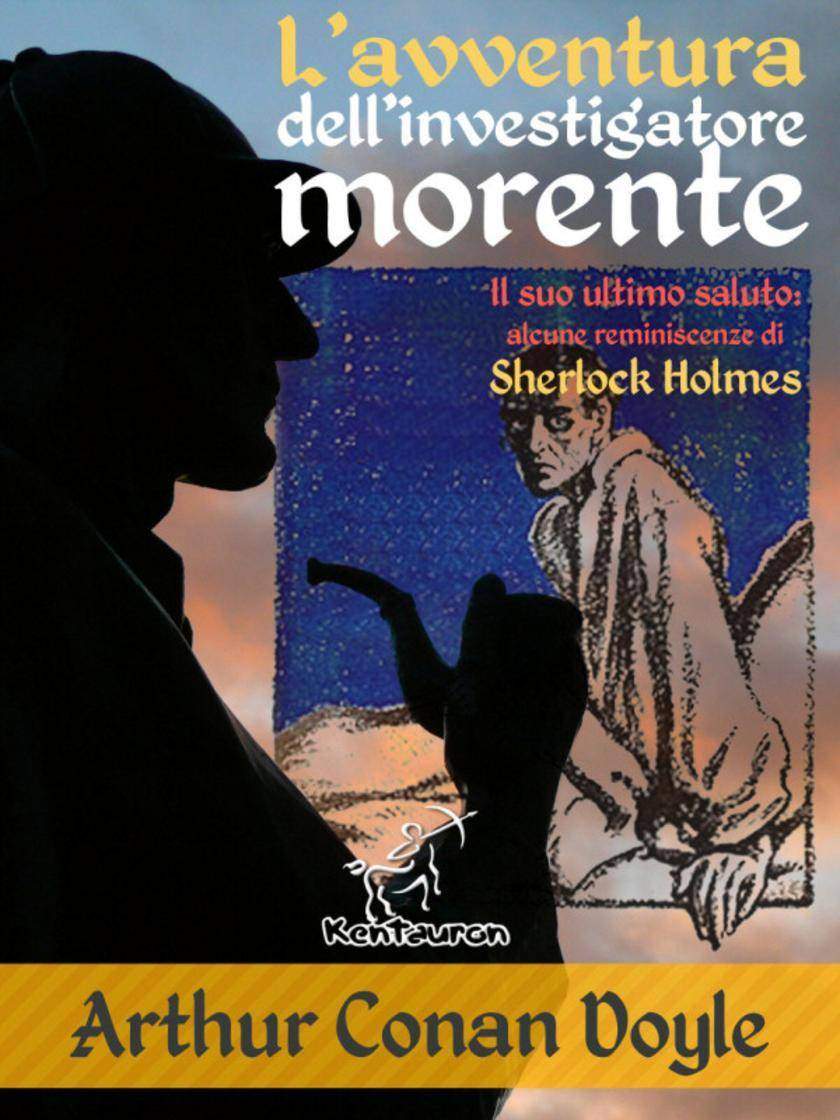
L'avventura dell’investigatore morente
¥4.58
Nuova edizione illustrata con i disegni originali di Walter Paget e Frederic Dorr Steele. "L'avventura dell’investigatore morente", in alcune edizioni intitolato "L'avventura del detective morente" o "L'avventura del poliziotto morente" è uno dei 56 racconti di Sherlock Holmes scritto dall'autore britannico Arthur Conan Doyle, inizialmente pubblicato nelle riviste Collier's e The Strand Magazine e in seguito parte di una raccolta di otto racconti pubblicata come libro con il titolo di "Il suo ultimo saluto: alcune reminiscenze di Sherlock Holmes", in alcune edizioni intitolato "L'ultimo saluto di Sherlock Holmes". Sir Arthur Ignatius Conan Doyle (Edimburgo, 22 maggio 1859 – Crowborough, 7 luglio 1930) è stato uno scrittore scozzese, considerato, insieme ad Edgar Allan Poe, il fondatore di due generi letterari: il giallo e il fantastico. In particolare è il capostipite del sottogenere noto come giallo deduttivo, reso famoso dal personaggio dell'investigatore Sherlock Holmes. La produzione dello scrittore tuttavia spazia dal romanzo d'avventura alla fantascienza, dal soprannaturale ai temi storici. Altre edizioniDisponibile anche in inglese e in edizione bilingue con testo inglese a fronte, specifica per tablet (il testo originale e la traduzione vengono visualizzati su due colonne affiancate).
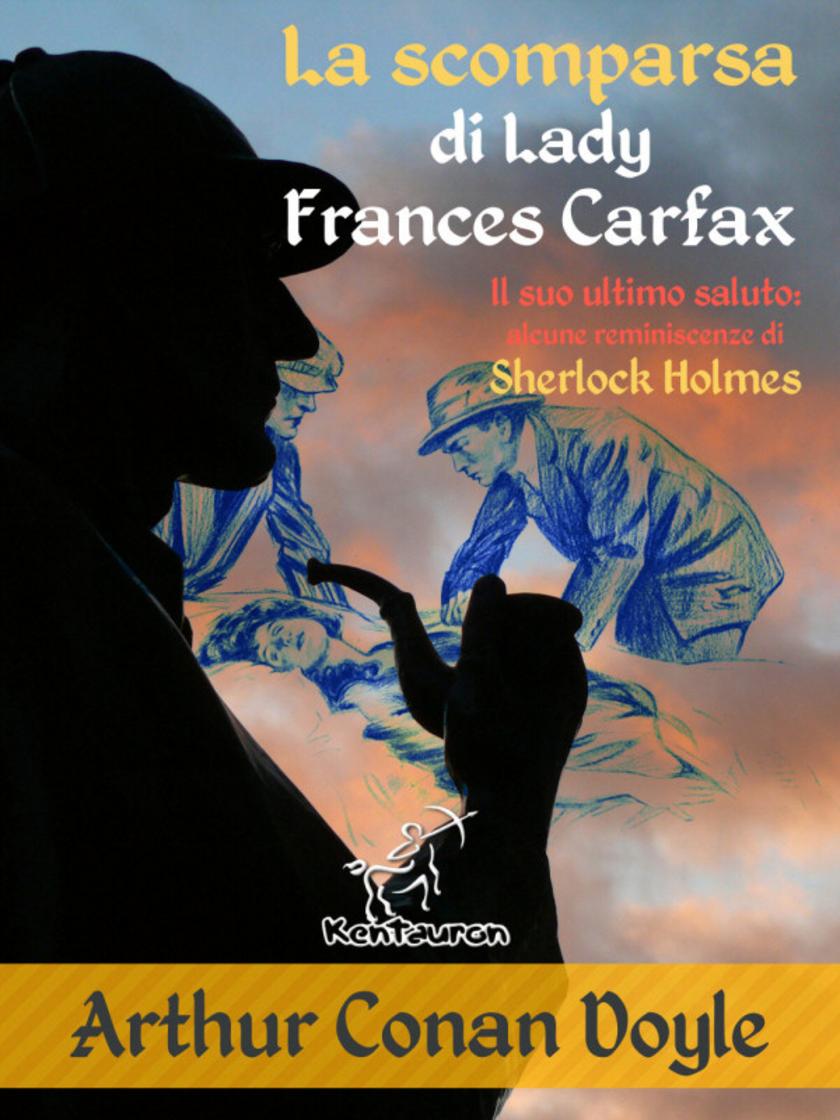
La scomparsa di Lady Frances Carfax
¥4.58
Nuova edizione illustrata con i disegni originali di Alec Ball, Frederic Dorr Steele, Knott e T. V. McCarthy. "La scomparsa di Lady Frances Carfax" è uno dei 56 racconti di Sherlock Holmes scritto dall'autore britannico Arthur Conan Doyle, inizialmente pubblicato nelle riviste American Magazine e The Strand Magazine e in seguito parte di una raccolta di otto racconti pubblicata come libro con il titolo di ""Il suo ultimo saluto: alcune reminiscenze di Sherlock Holmes"", in alcune edizioni intitolato ""L'ultimo saluto di Sherlock Holmes"". ? uno dei pochi racconti in cui per gran parte della trama Watson deve agire da solo e cerca di fare del suo meglio con Holmes posto in secondo piano. Sir Arthur Ignatius Conan Doyle (Edimburgo, 22 maggio 1859 – Crowborough, 7 luglio 1930) è stato uno scrittore scozzese, considerato, insieme ad Edgar Allan Poe, il fondatore di due generi letterari: il giallo e il fantastico. In particolare è il capostipite del sottogenere noto come giallo deduttivo, reso famoso dal personaggio dell'investigatore Sherlock Holmes. La produzione dello scrittore tuttavia spazia dal romanzo d'avventura alla fantascienza, dal soprannaturale ai temi storici. Altre edizioni Disponibile anche in inglese e in edizione bilingue con testo inglese a fronte, specifica per tablet (il testo originale e la traduzione vengono visualizzati su due colonne affiancate).
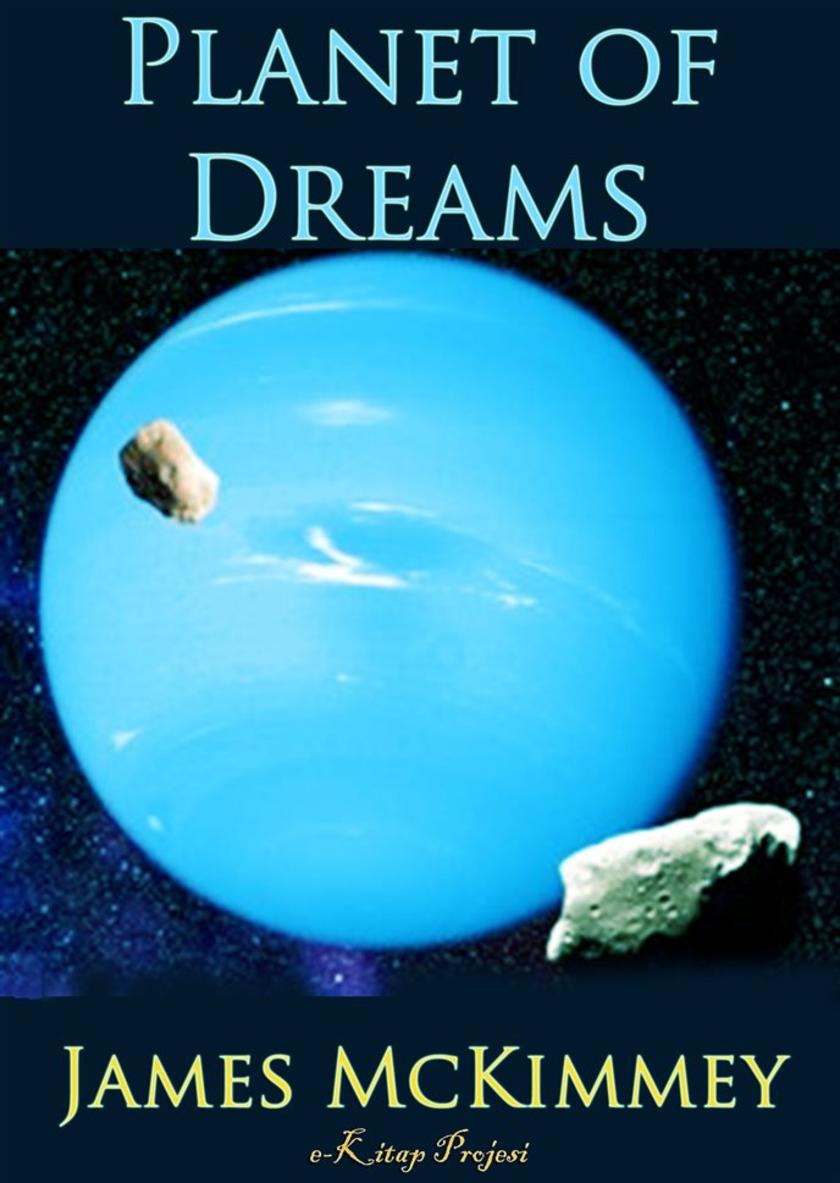
Planet of Dreams
¥4.58
Strumming a harp while floating on a white cloud might be Paradise for some people, but it would bore others stiff. Given an unlimited chance to choose your ideal world, what would you specify—palaces or log cabins? I'll take beer, son, and thanks again for the offer. As you can see, I'm kinda down on my luck. I know what you're thinking, but I'm not really on the bum. I usually make out all right—nothing fancy, mind you, but it's a living. Odd jobs in the winter and spring, follow the harvests in the summer and fall. Things are slack right now.You? Electronics, huh? Used to know a fellow in electronics.... His name was Joe Shannon, used to work for Stellar Electric up in Fremont. Young fellow, not more'n twenty-five or so. Rail thin, wispy hair, serious look—you know, the one suit, absent-minded type. Joe was a brain. A triple-A, gold-plated, genuine genius. Had a wife named Marge. Not beautiful but pretty and a nice figure and a cook you never saw the likes of. Like I say, she was married to Joe but Joe was married to his work and after you'd been around a while, you could tell there was friction. But that ain't the beginning.
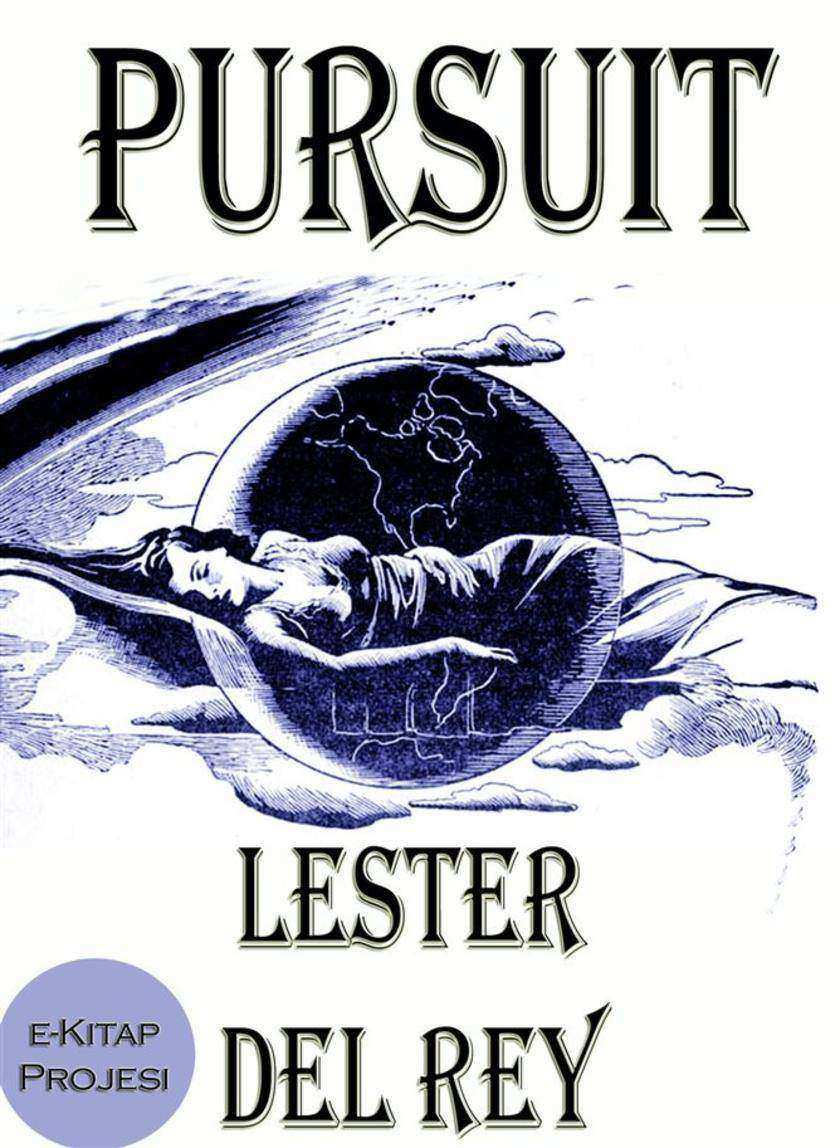
Pursuit
¥4.58
"When all the gods had assembled in conference, Zeus arose among them and addressed them thus" . . . "it is with this line that Plato's story of Atlantis ends; and the words of Zeus remain unknown." -- Francis Bacon, New Atlantis Of all the writings of Plato the Timaeus is the most obscure and repulsive to the modern reader, and has nevertheless had the greatest influence over the ancient and mediaeval world. The obscurity arises in the infancy of physical science, out of the confusion of theological, mathematical, and physiological notions, out of the desire to conceive the whole of nature without any adequate knowledge of the parts, and from a greater perception of similarities which lie on the surface than of differences which are hidden from view. To bring sense under the control of reason; to find some way through the mist or labyrinth of appearances, either the highway of mathematics, or more devious paths suggested by the analogy of man with the world, and of the world with man; to see that all things have a cause and are tending towards an end—this is the spirit of the ancient physical philosopher. He has no notion of trying an experiment and is hardly capable of observing the curiosities of nature which are 'tumbling out at his feet,' or of interpreting even the most obvious of them. He is driven back from the nearer to the more distant, from particulars to generalities, from the earth to the stars. He lifts up his eyes to the heavens and seeks to guide by their motions his erring footsteps. But we neither appreciate the conditions of knowledge to which he was subjected, nor have the ideas which fastened upon his imagination the same hold upon us. For he is hanging between matter and mind; he is under the dominion at the same time both of sense and of abstractions; his impressions are taken almost at random from the outside of nature; he sees the light, but not the objects which are revealed by the light; and he brings into juxtaposition things which to us appear wide as the poles asunder, because he finds nothing between them. He passes abruptly from persons to ideas and numbers, and from ideas and numbers to persons,—from the heavens to man, from astronomy to physiology; he confuses, or rather does not distinguish, subject and object, first and final causes, and is dreaming of geometrical figures lost in a flux of sense. He contrasts the perfect movements of the heavenly bodies with the imperfect representation of them (Rep.), and he does not always require strict accuracy even in applications of number and figure (Rep.). His mind lingers around the forms of mythology, which he uses as symbols or translates into figures of speech. He has no implements of observation, such as the telescope or microscope; the great science of chemistry is a blank to him. It is only by an effort that the modern thinker can breathe the atmosphere of the ancient philosopher, or understand how, under such unequal conditions, he seems in many instances, by a sort of inspiration, to have anticipated the truth. The influence with the Timaeus has exercised upon posterity is due partly to a misunderstanding. In the supposed depths of this dialogue the Neo-Platonists found hidden meanings and connections with the Jewish and Christian Scriptures, and out of them they elicited doctrines quite at variance with the spirit of Plato. Believing that he was inspired by the Holy Ghost, or had received his wisdom from Moses, they seemed to find in his writings the Christian Trinity, the Word, the Church, the creation of the world in a Jewish sense, as they really found the personality of God or of mind..
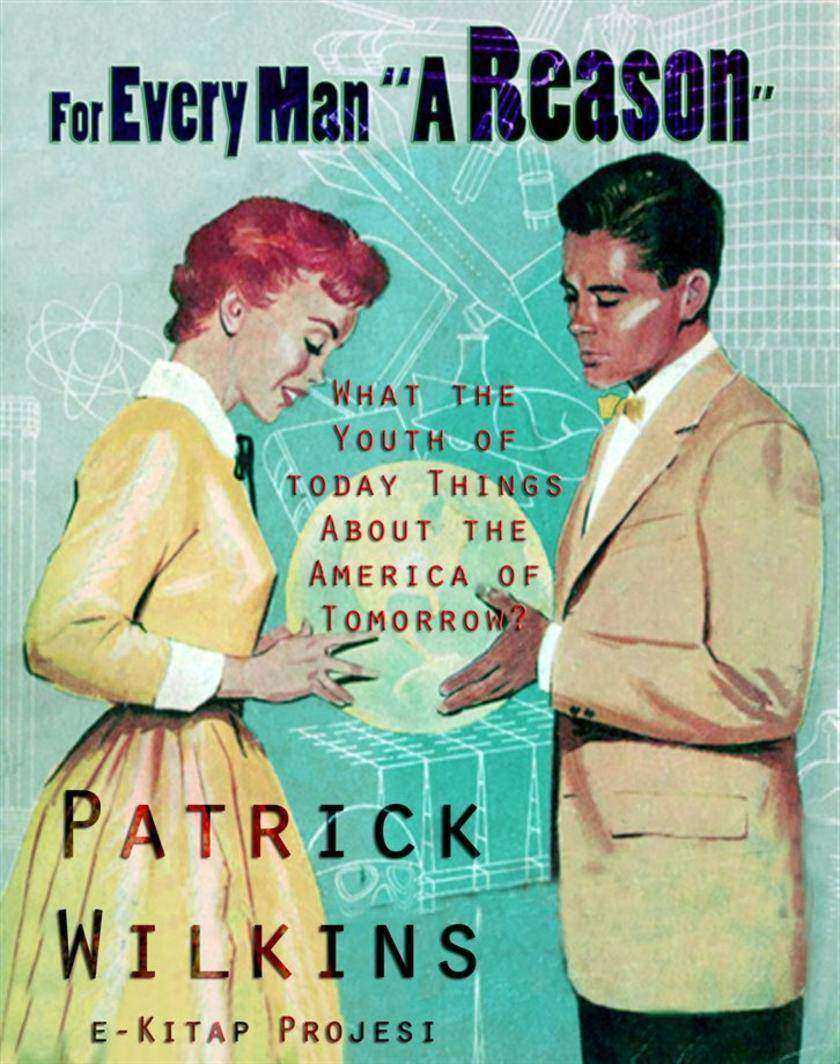
For Every Man A Reason
¥4.58
He stood watching while George Atkinson spun around, dark eyes flashing, hair tousled. There was a two days' growth of beard darkening Atkinson's face. "Why, George," Loveral said, swiftly examining the litter of metal and wood which was spread over a table behind Atkinson. There was a home-made hammer in Atkinson's hand. "What have we here, George?""Something for you," Atkinson said, tightening his fingers about the handle of the hammer.Loveral grinned his famous Loveral grin. "That's fine. What could it be?" "None of your damned business.""George," Loveral said, his smile still white but his eyes narrow and quick.The woman was behind them. Her voice screeched. "George, I told you. Why didn't you listen, George? You should have listened to me. You—" Loveral held up a hand, still watching Atkinson. "Now tell me, George, what is it you're making for me?"Atkinson raised the hammer slightly.Loveral stood very still. "That's a nice hammer, George."Atkinson's eyes were black beneath his thick brows."You made that, didn't you?" Loveral asked."Yes, I made that," Atkinson said. "I made that and I made something else. Another minute and I'll have that finished, too." "George," said Loveral, stepping quietly forward, "I don't like to say this, of course. You've been one of our very best members. But nobody works here, George. We can't allow that. You know the rules." "I know the rules, all right.""Well, then," Loveral said, extending his hand toward the hammer, "we'll just destroy this and whatever else you might have been making. We'll just forget it ever happened. We'll get along real fine that way, George. We'll just be such good friends.""We'll just go to hell," said Atkinson, snatching his hammer away. Loveral's smile disappeared. "I'll tell you, George. I have to mean business with this. You know the reasons. If we allow anybody to work here, then there's going to be trouble. That isn't our plan. We're here to grow within ourselves and expand culturally. Not to commercialize a beautiful world like Dream Planet."
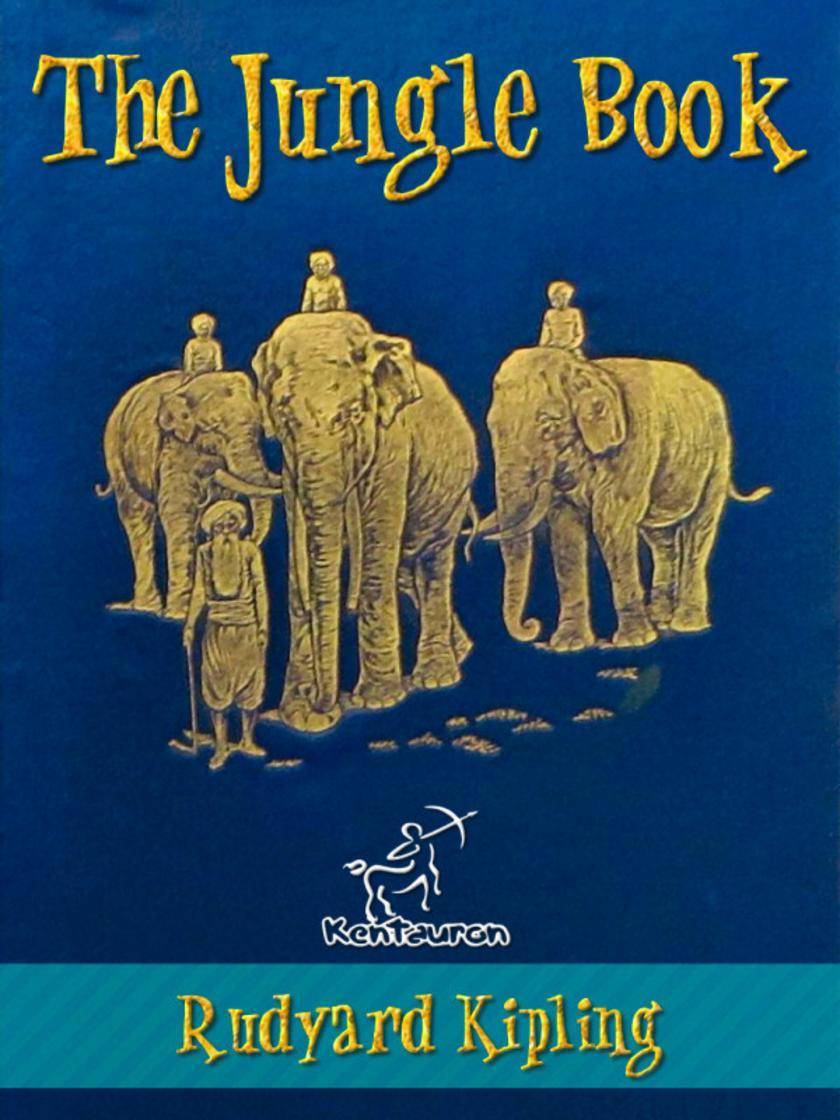
The Jungle Book
¥4.58
The Jungle Book (1894) is a collection of stories by English author Rudyard Kipling. The stories were first published in magazines in 1893–94. The edition contains 89 illustrations by Maurice de Becque, and others, like the author's father, John Lockwood Kipling.? The tales in the book (as well as those in The Second Jungle Book which followed in 1895, and which includes five further stories about Mowgli) are fables, using animals in an anthropomorphic manner to give moral lessons. The verses of The Law of the Jungle, for example, lay down rules for the safety of individuals, families, and communities. Kipling put in them nearly everything he knew or "heard or dreamed about the Indian jungle." Other readers have interpreted the work as allegories of the politics and society of the time. The best-known of them are the three stories revolving around the adventures of Mowgli, an abandoned "man cub" who is raised by wolves in the Indian jungle. The most famous of the other four stories are probably "Rikki-Tikki-Tavi", the story of a heroic mongoose, and "Toomai of the Elephants", the tale of a young elephant-handler. As with much of Kipling's work, each of the stories is followed by a piece of verse.The Jungle Book came to be used as a motivational book by the Cub Scouts, a junior element of the Scouting movement. This use of the book's universe was approved by Kipling at the request of Robert Baden-Powell, founder of the Scouting movement, who had originally asked for the author's permission for the use of the Memory Game from Kim in his scheme to develop the morale and fitness of working-class youths in cities. Akela, the head wolf in The Jungle Book, has become a senior figure in the movement, the name being traditionally adopted by the leader of each Cub Scout pack.
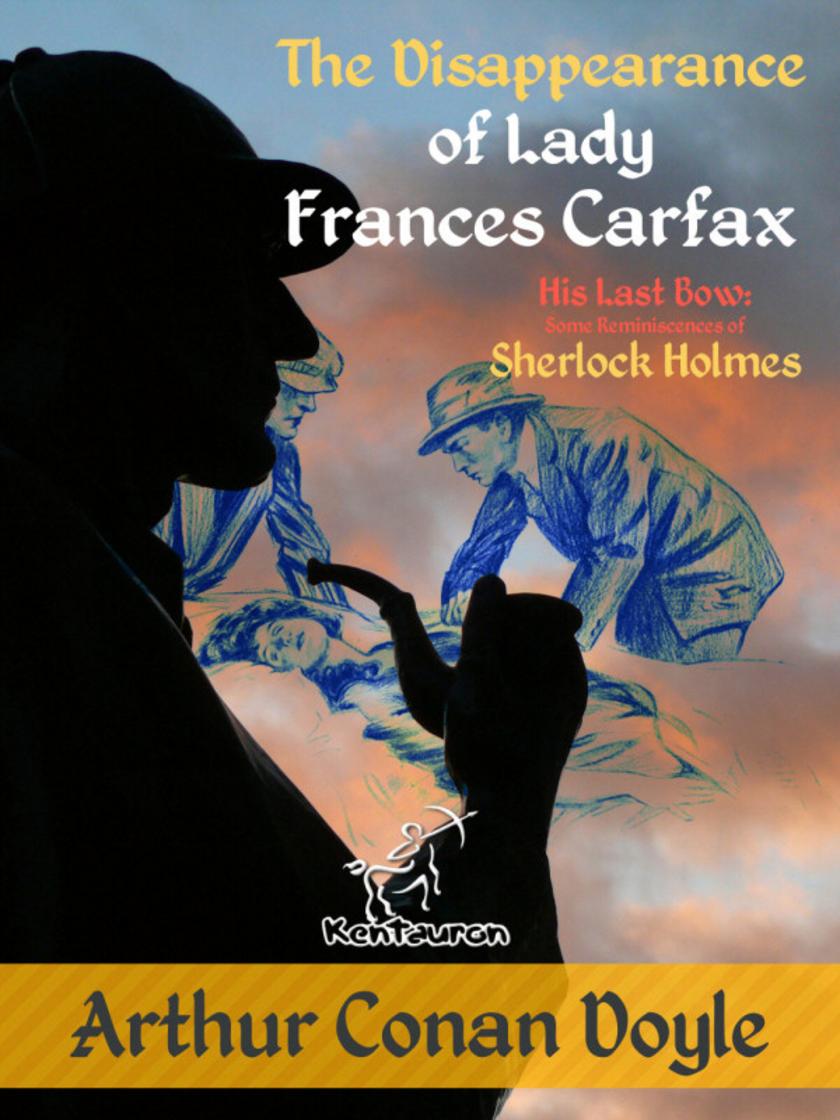
The Disappearance of Lady Frances Carfax
¥4.58
New illustrated edition with original drawings by Alec Ball, Frederic Dorr Steele, Knott, and T. V. McCarthy. 'The Disappearance of Lady Frances Carfax' is one of the 56 Sherlock Holmes short stories written by British author Arthur Conan Doyle, at first published in the American Magazine and The Strand Magazine, and then part of a collection of eight stories published as a book entitled 'His Last Bow: Some Reminiscences of Sherlock Holmes' in some editions titled 'His Last Bow: Some Later Reminiscences of Sherlock Holmes'. It's one of the few stories in which for much of the plot Watson must act alone and try his best with Holmes left in the background. Sir Arthur Ignatius Conan Doyle (22 May 1859 – 7 July 1930) was an Irish-Scots writer and physician, most noted for creating the fictional detective Sherlock Holmes and writing stories about him which are generally considered milestones in the field of crime fiction. He is also known for writing the fictional adventures of a second character he invented, Professor Challenger, and for popularising the mystery of the Mary Celeste. He was a prolific writer whose other works include fantasy and science fiction stories, plays, romances, poetry, non-fiction and historical novels. This Kentauron edition has been professionally formatted for e-readers with a linked table of contents. We hope you’ll share this book with your friends, neighbors and colleagues and can’t wait to hear what you have to say about it. Kentauron is dedicated to helping everyone develop a lifetime love of reading, no matter what form it takes. Also available as English-Italian bilingual parallel text editions, and single language editions.
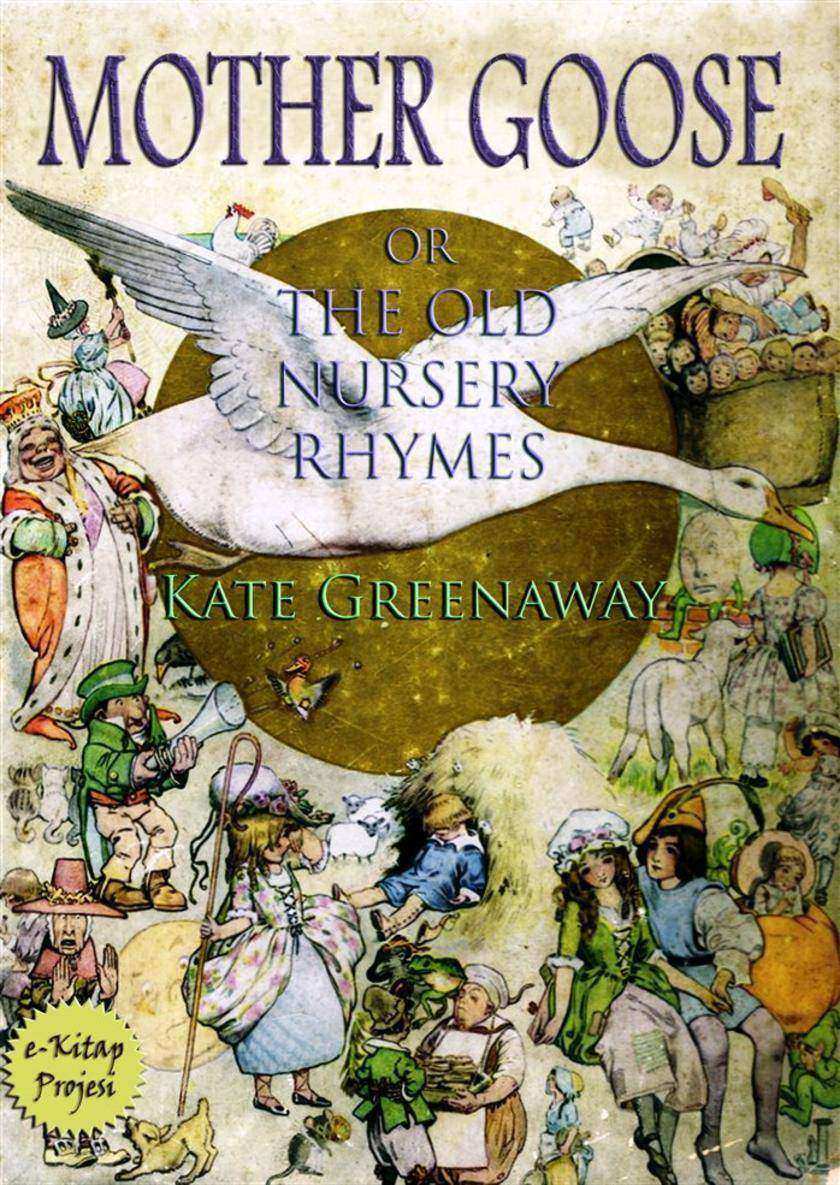
Mother Goose or the Old Nursery Rhymes
¥4.58
"It is your best work, Basil, the best thing you have ever done," said Lord Henry, languidly. "You must certainly send it next year to the Grosvenor. The Academy is too large and too vulgar. The Grosvenor is the only place." "I don't think I will send it anywhere," he answered, tossing his head back in that odd way that used to make his friends laugh at him at Oxford. "No: I won't send it anywhere." Lord Henry elevated his eyebrows, and looked at him in amazement through the thin blue wreaths of smoke that curled up in such fanciful whorls from his heavy opium-tainted cigarette. "Not send it anywhere? My dear fellow, why? Have you any reason? What odd chaps you painters are! You do anything in the world to gain a reputation. As soon as you have one, you seem to want to throw it away. It is silly of you, for there is only one thing in the world worse than being talked about, and that is not being talked about. A portrait like this would set you far above all the young men in England, and make the old men quite jealous, if old men are ever capable of any emotion." "I know you will laugh at me," he replied, "but I really can't exhibit it. I have put too much of myself into it." Lord Henry stretched his long legs out on the divan and shook with laughter. "Yes, I knew you would laugh; but it is quite true, all the same." "Too much of yourself in it! Upon my word, Basil, I didn't know you were so vain; and I really can't see any resemblance between you, with your rugged strong face and your coal-black hair, and this young Adonis, who looks as if he was made of ivory and rose-leaves. Why, my dear Basil, he is a Narcissus, and you--well, of course you have an intellectual expression, and all that. But beauty, real beauty, ends where an intellectual expression begins. Intellect is in itself an exaggeration, and destroys the harmony of any face. The moment one sits down to think, one becomes all nose, or all forehead, or something horrid. Look at the successful men in any of the learned professions. How perfectly hideous they are! Except, of course, in the Church. But then in the Church they don't think. A bishop keeps on saying at the age of eighty what he was told to say when he was a boy of eighteen, and consequently he always looks absolutely delightful. Your mysterious young friend, whose name you have never told me, but whose picture really fascinates me, never thinks. I feel quite sure of that. He is a brainless, beautiful thing, who should be always here in winter when we have no flowers to look at, and always here in summer when we want something to chill our intelligence. Don't flatter yourself, Basil: you are not in the least like him."

La cedola falsificata: Denaro Falso
¥4.58
“Non capite, se giudicate” Il racconto è diviso in due parti: nella prima la falsificazione di un titolo di credito di piccolo valore, fatta da due studenti, innesca una catena di eventi che coinvolgono decine di altre persone, con conseguenze sempre più gravi; nella seconda parte viene offerta una possibilità di redenzione alla maggior parte dei protagonisti superstiti. Pubblicato anche con il titolo di ""Denaro falso"" e ""La cedola falsa"", questo racconto è stato giudicato un racconto-pamphlet, una requisitoria contro il denaro, inteso come strumento di corruzione individuale e sociale. Contro il potere del denaro, Tolstòj auspica un ritorno a forme sociali premoderne che ricordano le utopie rousseaviane. Nuova edizione rivista e corretta: 6 gennaio 2016 Nota: Se hai acquistato questo ebook prima del 6 gennaio 2016 e vuoi ricevere gratuitamente la nuova edizione, rivista e corretta, invia un'email alla redazione di Kentauron, all'indirizzo che trovi all'interno dell'ebook."
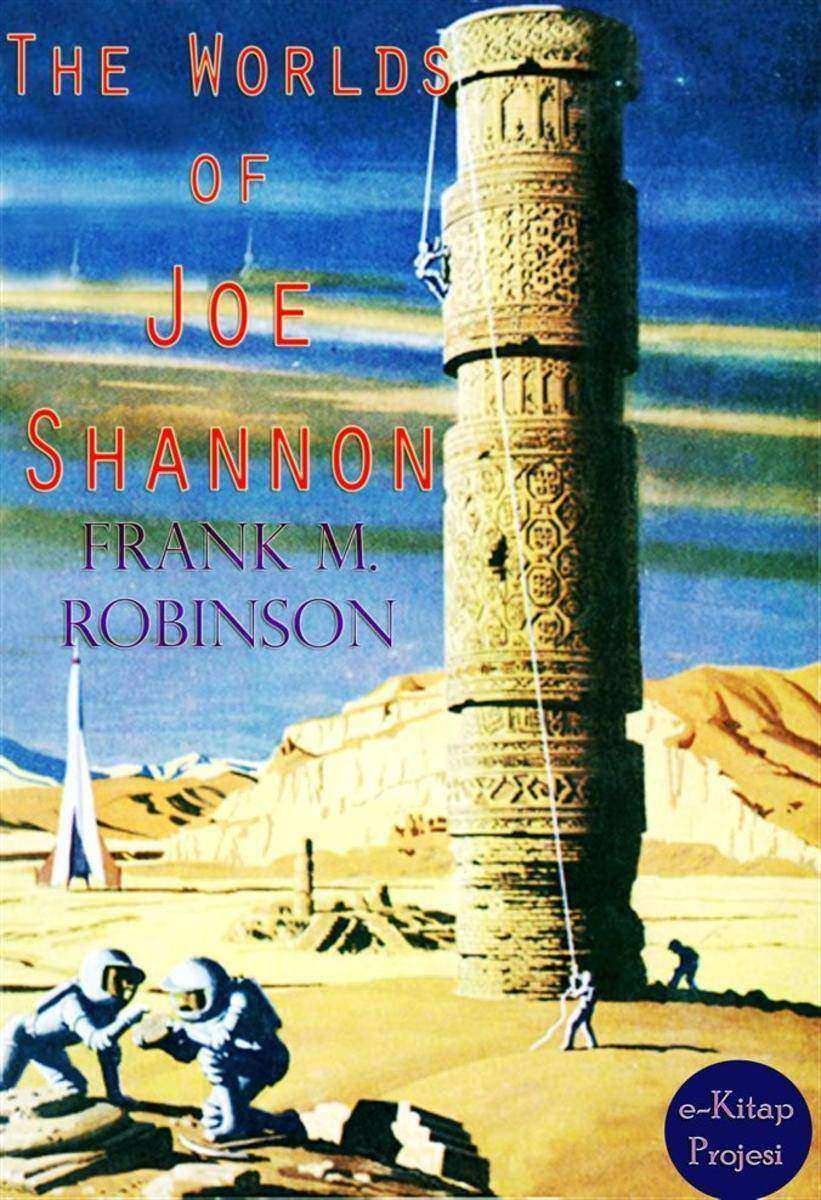
The Worlds of Joe Shannon
¥4.58
Jung’a g?re i? dünyam?za y?nelik de ?e?itli yap?lar?m?z vard?r. Her insanda hem di?ili?e ait bir?davran???ve hissedi? yap?s?( ki buna “anima” ad?n? vermi?tir) hem de erkekli?e ait bir yap? (“animus”) vard?r. Ona g?re bu iki yap? aras?ndaki dengeye ait sorunlar cinsel kimlik bozukluklar?ndan,??ki?ilik?bozukluklar?na dek ?ok farkl? psikiyatrik bozukluklara yol a?abilmektedir.?Bunlar?n en alt?nda ise, “kendilik” dedi?imiz as?l bizim i?imizdeki??z?olarak dü?ünülebilecek olan, rüyalar?m?zda farkl?la?arak ortaya ??kan adeta yerkürenin merkezindeki ma?ma katman? gibi enerjik bir yap? vard?r. ????NDEK?LER ?Carl Gustav Jung’un Ya?am ?yküsü?B?R?NC? B?L?M:?JUNG PS?KOLOJ?S?NE G?R??ANAL?T?K PS?KOLOJ?Bilin? ve Bilin?d???n?n ??leviKi?ilik Kuram?Psikoterapi SüreciJung’un psikoloji-psikiyatri bilimine yapt??? katk?larBilincin ?ne ??k???Bilincin ??levleri??levlerin y?netimi:Psikolojik tipler &?Dünyaya y?nelik tutumlar:D??ad?nüklük??e d?nüklükBilin?d???: Ki?isel ve Kolektif Bilin?d???Bilin? ve bilin?d??? ili?kisi:Jung ve E?zamanl?l?kE?zamanl?l?k –Jung’un Ger?ekli?e Yan?t?G?LGE KAVRAMI VE JUNG.. ? ?K?NC? B?L?M: FREUD VE JUNG ARASINDAK? FARKLAR Edebiyat Konusunda Freud ve Jung'un Yakla??mlar?n?n K?yaslanmas?FREUD VE JUNG DA PS?KANAL?Z VE D?N..Edebiyat Konusunda Freud Ve Jung'un Yakla??mlar?n?n K?yaslanmas?PS?KANAL?Z VE D?NPS?KANAL?ZDE R?YA YORUMU FREUD VE JUNG.. ? ???NC? B?L?M: JUNG VE D?RT ARKET?P.. ? D?RD?NC? B?L?M: JUNG VE PS?KANAL?T?K KURAM JUNG PS?KOLOJ?S?NE A?T BAZI KAVRAMLARKollektif Bilin?alt?nda bulunan belli ba?l? arketipler:K???L???N GEL???M?YA?AM D?NEMLER???LEVLERR?YALAR VE S?MGELERJUNG TERAP?S?PS?KOTERAP?DE S?MGELER?N KULLANIMIR?YALAR VE S?MGELERR?YALAR VE YORUMLARELE?T?R?LER G?R??LERArketip Kavram? ve Marka Ki?ilikleriStratejik A??dan Marka Ki?ilikleriJung'a G?re Ki?ilik Yap?s?Ki?isel Bilin?alt? ? BE??NC? B?L?M: Analitik Psikoloji Temel ?lke ve Kavramlar CARL GUSTAV JUNG'da,?E?zamanl?l?k –Jung’un Ger?ekli?e Yan?t?TEOR?ArketiplerAnne ArketipiManaG?lgePersonaAnima ve animusDi?er arketipler?nsan akl?n?n dinamikleriBenlikE?zamanl?l?k ? ALTINCI B?L?M: JUNG ?ZER?NE KISA B?R ?NCELEME Arketip Kavramlar?Eril Arketipler:Di?il Arketipler:K?tüler:As?l Mesele:?Carl Gustav Jung ve Analitik Psikoloji (?zet ve Kar??la?t?rma) ? YED?NC? B?L?M: CARL GUSTAV JUNG VE PS?KOLOJ? YEN? B?R D?NEM “B?L?N?ALTININ ??Z?M?”Carl Jung'un Astroloji Hakk?ndaki?S?ylemleriJUNG’ DAN BAZI S?ZLER: ? SEK?Z?NC? B?L?M: SONU?LAR .. ? DOKUZUNCU B?L?M: JUNG PS?KOLOJ?S?NE A?T BAZI KAVRAMLAR K???L???N GEL???M??nsan akl?n?n dinamikleriBenlikE?zamanl?l?kHayvan Davran??lar?na Psikolojik Yakla??mlar?nsan Davran??lar?n?n Anla??lmas?nda Bir Yakla??m: Psikoanalitik KuramFreud ve Evrimsel Biyoloji: Psikanalitik Kuram'?n Ele?tirisiFELSEFEN?N PS?KANAL?Z ?ZER?NE ETK?LER?…B?L?N?DI?ININ KARANLIK YANIJUNG’A G?RE C?NSELL???N ??LEV?…Komplekslerin TipolojisiLibido Ve ?tkiler ve YükseltilmesiLibidonun Dinami?iFreud’dan Sonra Libido
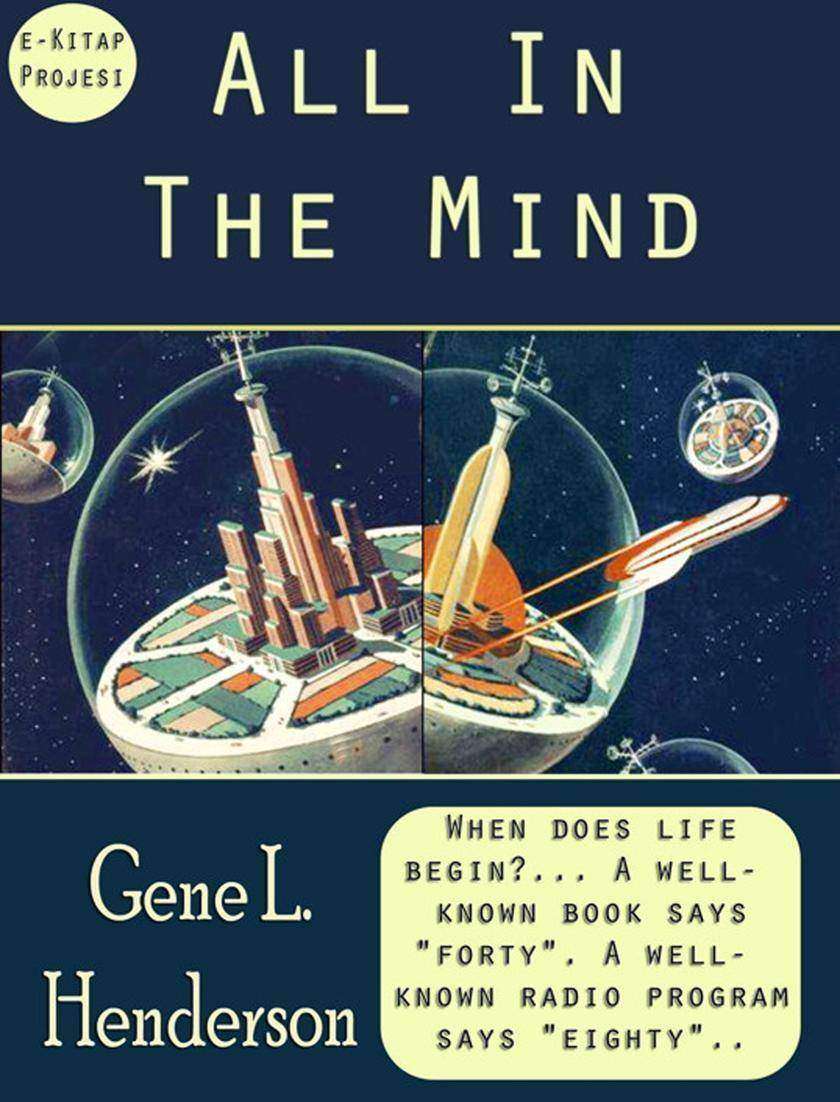
All In The Mind: Illustrated
¥4.58
The Jungle Book (1894) is a collection of stories by English Nobel laureate Rudyard Kipling. The stories were first published in magazines in 1893–94. The original publications contain illustrations, some by Rudyard's father, John Lockwood Kipling. Kipling was born in India and spent the first six years of his childhood there. After about ten years in England, he went back to India and worked there for about six-and-a-half years. These stories were written when Kipling lived in Vermont. There is evidence that it was written for his daughter Josephine, who died in 1899 aged six, after a rare first edition of the book with a poignant handwritten note by the author to his young daughter was discovered at the National Trust's Wimpole Hall in Cambridgeshire in 2010. The tales in the book (and also those in The Second Jungle Book which followed in 1895, and which includes five further stories about Mowgli) are fables, using animals in an anthropomorphic manner to give moral lessons. The verses of The Law of the Jungle, for example, lay down rules for the safety of individuals, families and communities. Kipling put in them nearly everything he knew or "heard or dreamed about the Indian jungle." Other readers have interpreted the work as allegories of the politics and society of the time. The best-known of them are the three stories revolving around the adventures of an abandoned "man cub" Mowgli who is raised by wolves in the Indian jungle. The most famous of the other stories are probably "Rikki-Tikki-Tavi", the story of a heroic mongoose, and "Toomai of the Elephants", the tale of a young elephant-handler. As with much of Kipling's work, each of the stories is preceded by a piece of verse, and succeeded by another. Characters:Akela – An Indian WolfBagheera – A melanistic (black) pantherBaloo— A Sloth BearBandar-log – A tribe of monkeysChil – A kite (renamed "Rann" in US editions)Chuchundra – A MuskratDarzee – A tailorbirdFather Wolf – The Father Wolf who raised Mowgli as his own cubGrey brother – One of Mother and Father Wolf's cubsHathi – An Indian ElephantIkki – An Asiatic Brush-tailed Porcupine (mentioned only)Kaa – Indian PythonKarait – Common KraitKotick – A White SealMang – A BatMor – An Indian PeafowlMowgli – Main character, the young jungle boyNag – A male Black cobraNagaina – A female King cobra, Nag's mateRaksha – The Mother wolf who raised Mowgli as own cubRikki-Tikki-Tavi – An Indian MongooseSea Catch – A Northern fur seal and Kotick's fatherSea Cow – A Steller's Sea CowSea Vitch – A WalrusShere Khan— A Royal Bengal TigerTabaqui – An Indian Jackal

Learn How to Survive in Fallout Shelter
¥4.58
Learn How to Survive in Fallout Shelter
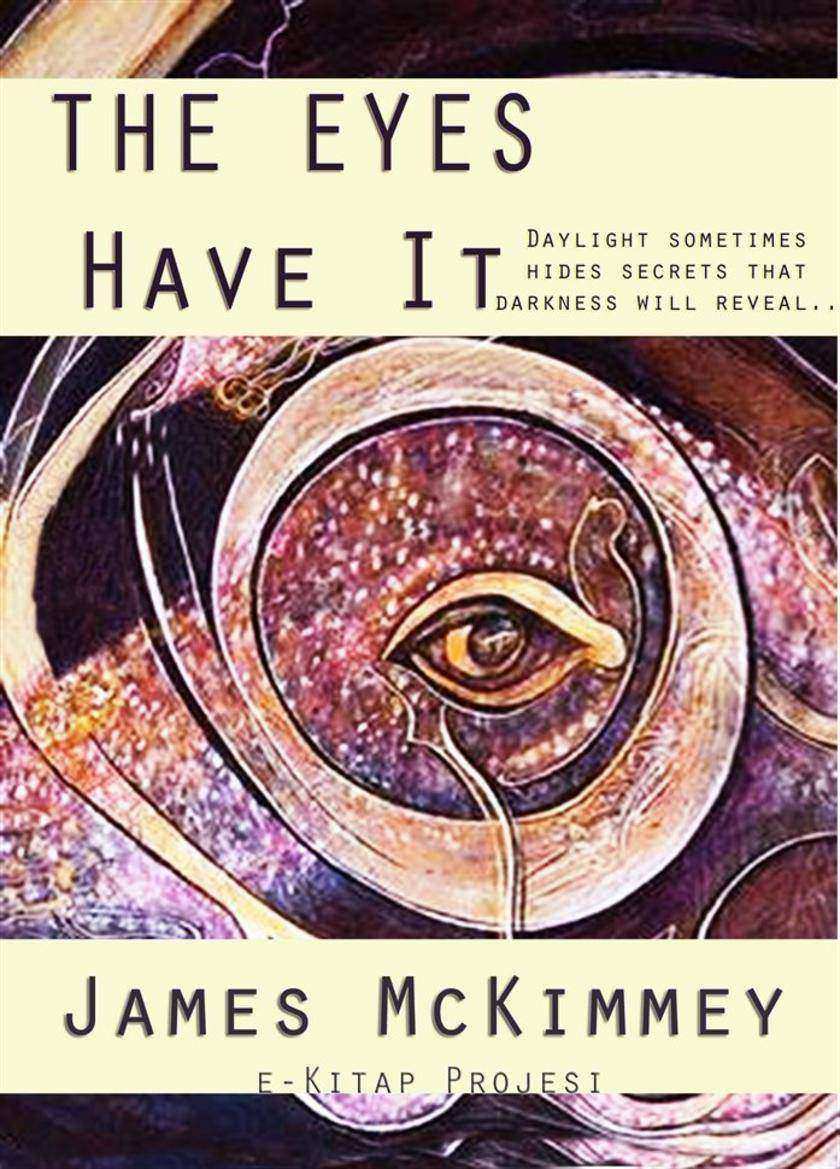
The Eyes Have It
¥4.58
MODERN scientific publications, although they may in some or even many cases equal in their scientific quality the memoirs of earlier workers, do not, on the average, reach a high standard as regards illustration. For instance, in Great Britain botany is pre-eminent in its morphological aspects; it should therefore follow that the illustrations, which form so important a part of such papers, should be beyond reproach. This is not always so, a fact which must be patent to anyone with the slightest critical knowledge who looks through a typical journal. This is a fact much to be regretted, since many of the earlier scientists were accomplished draughtsmen and, indeed, often artists; in this connection the Hookers and Pro-fessor Daniel Oliver may be mentioned. The implication is not intended that there are no good amateur draughtsmen nowadays; there are, and in some cases pos-sessed of great ability. The beautiful work of Church in his Floral Mechanisms may be cited as an example. It may, of course, be argued that any picture which serves to illustrate the particu-lar feature is good enough; this is the contention of one who takes an insufficient pride in his work. A feature worthy of an illustration deserves the best the author can produce, more especially as a literary form is still, fortunately, preserved or, at any rate, aimed at.The reason for indifferent illustrations is primarily due to bad or mediocre draw-ings, or to their unsuitability for the kind of reproduction in view. With regard to the first point: this lack of draughtsmanship often obtains; when education entirely replaces mere instruction, it is to be hoped that all students of science will be trained in the rudiments of drawing. Meanwhile the difficulty can be partly overcome, as will be seen later on, by the simple means of drawing on an enlarged scale, in order that in reproduction reduction can be made. The second reason, the onus of which also falls on the authors, is a lack of knowledge regarding the kind of drawing suitable for the different modes of re-production; this is a very important point, for "technical conditions govern even genius itself."Authors, however, are not always to blame; it would appear that even editors sometimes are wanting in the requisite knowledge, for we have known straight-forward line drawings reproduced by half-tone; in other cases the paper used is unsuitable for the reproduction and, at other times, the printers are at fault. With a view to remedying, at any rate in part, these deficiencies, a course of lec-tures, arranged by the Board of Studies in Botany of the University of London, was delivered in the Lent term of 1913 in the Department of Botany of University College, London. In gratifying the wish expressed by some that these lectures should be given a more permanent dress, the author feels that some apology is necessary, for he can lay no claim to authoritative knowledge of much of the subject-matter; questions relating to the graphic arts and to illustrations, however, have always been of in-terest to him, so that he has tried various experiments, often with disastrous re-sults, and thus has gained some experience. In these matters the author has benefited much through his association with Pro-fessor F. W. Oliver, who, characteristically, has been ever ready to discuss these problems with, and to place his knowledge and experience at the disposal of the author.
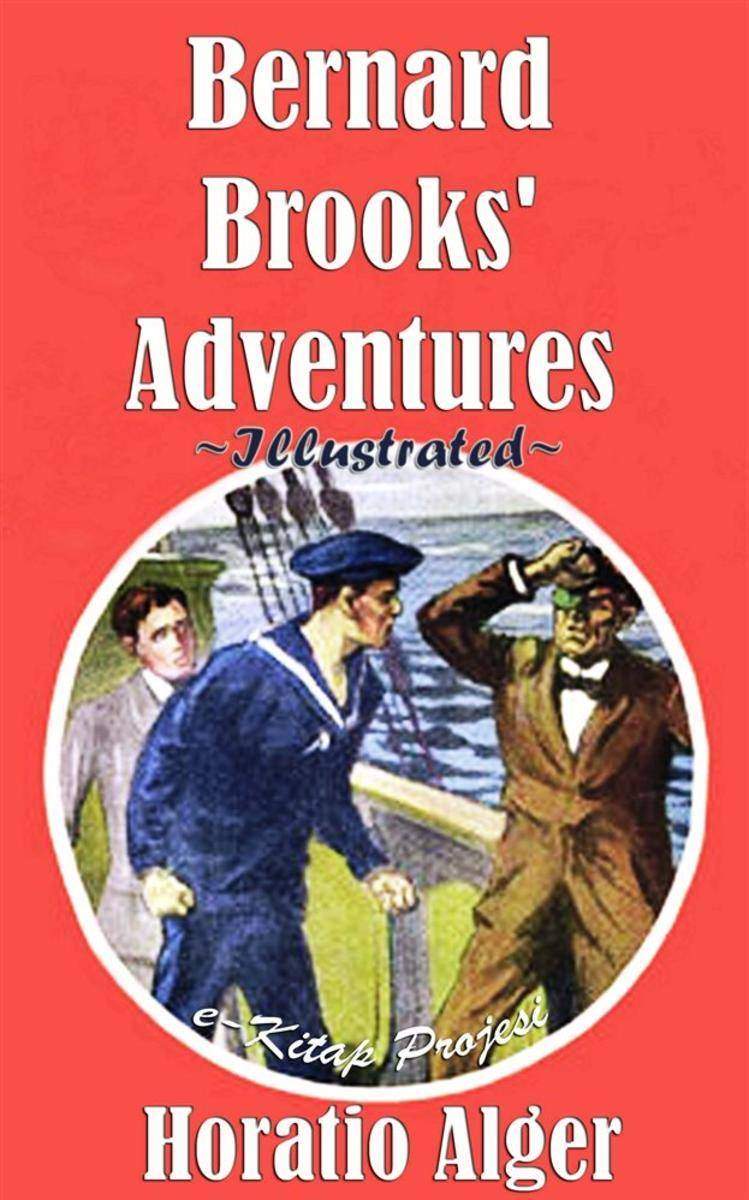
Bernard Brooks' Adventures: Illustrated
¥4.58
The dominant motives in Calderon's dramas are characteristically national: fervid loyalty to Church and King, and a sense of honor heightened almost to the point of the fantastic. Though his plays are laid in a great variety of scenes and ages, the sentiment and the characters remain essentially Spanish; and this intensely local quality has probably lessened the vogue of Calderon in other countries. In the construction and conduct of his plots he showed great skill, yet the ingenuity expended in the management of the story did not restrain the fiery emotion and opulent imagination which mark his finest speeches and give them a lyric quality which some critics regard as his greatest distinction. Of all Calderon's works, "Life is a Dream" may be regarded as the most universal in its theme. It seeks to teach a lesson that may be learned from the philosophers and religious thinkers of many ages—that the world of our senses is a mere shadow, and that the only reality is to be found in the invisible and eternal. The story which forms its basis is Oriental in origin, and in the form of the legend of "Barlaam and Josaphat" was familiar in all the literatures of the Middle Ages. Combined with this in the plot is the tale of Abou Hassan from the "Arabian Nights," the main situations in which are turned to farcical purposes in the Induction to the Shakespearean "Taming of the Shrew." But with Calderon the theme is lifted altogether out of the atmosphere of comedy, and is worked up with poetic sentiment and a touch of mysticism into a symbolic drama of profound and universal philosophical significance. LIFE IS A DREAM DRAMATIS PERSONAE Basilio King of Poland.Segismund his Son.Astolfo his Nephew.Estrella his Niece.Clotaldo a General in Basilio's Service.Rosaura a Muscovite Lady.Fife her Attendant. Chamberlain, Lords in Waiting, Officers,Soldiers, etc., in Basilio's Service. The Scene of the first and third Acts lies on the Polish frontier: of the second Act, in Warsaw. As this version of Calderon's drama is not for acting, a higher and wider mountain-scene than practicable may be imagined for Rosaura's descent in the first Act and the soldiers' ascent in the last. The bad watch kept by the sentinels who guarded their state-prisoner, together with much else (not all!) that defies sober sense in this wild drama, I must leave Calderon to answer for; whose audience were not critical of detail and probability, so long as a good story, with strong, rapid, and picturesque action and situation, was set before them. about author: Pedro Calderon de la Barca was born in Madrid, January 17, 1600, of good family. He was educated at the Jesuit College in Madrid and at the University of Salamanca; and a doubtful tradition says that he began to write plays at the age of thirteen. His literary activity was interrupted for ten years, 1625-1635, by military service in Italy and the Low Countries, and again for a year or more in Catalonia. In 1637 he became a Knight of the Order of Santiago, and in 1651 he entered the priesthood, rising to the dignity of Superior of the Brotherhood of San Pedro in Madrid. He held various offices in the court of Philip IV, who rewarded his services with pensions, and had his plays produced with great splendor. He died May 5, 1681. At the time when Calderon began to compose for the stage, the Spanish drama was at its height. Lope de Vega, the most prolific and, with Calderon, the greatest, of Spanish dramatists, was still alive; and by his applause gave encouragement to the beginner whose fame was to rival his own. The national type of drama which Lope had established was maintained in its essential characteristics by Calderon, and he produced abundant specimens of all its varieties. Of regular plays he has left a hundred and twenty; of "Autos Sacramentales," the peculiar Spanish allegorical development of the medieval mystery, we have seventy-three; besides a considerable number of farces.
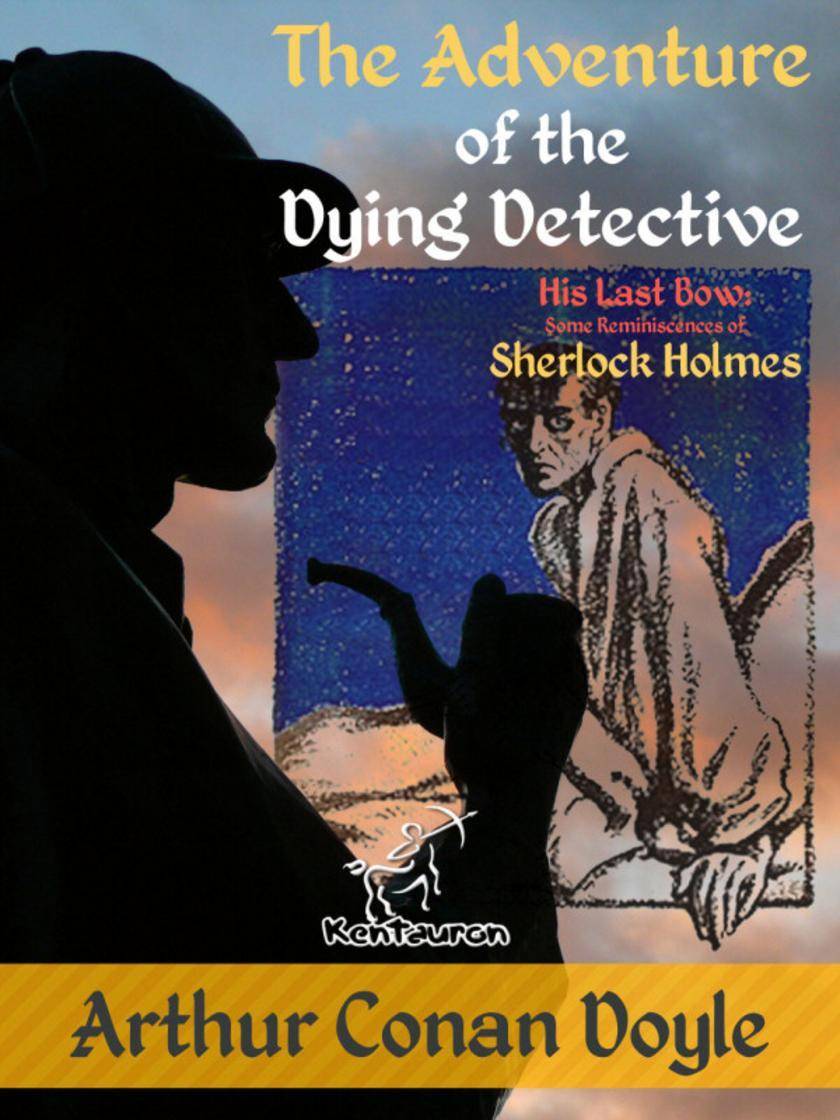
The Adventure of the Dying Detective
¥4.58
New illustrated edition with original drawings by Walter Paget and Frederic Dorr Steele. 'The Adventure of the Dying Detective', in some editions simply titled 'The Dying Detective', is one of the 56 Sherlock Holmes short stories written by British author Arthur Conan Doyle, at first published in Collier's magazine and The Strand Magazine, and then part of a collection of eight stories published as a book entitled 'His Last Bow: Some Reminiscences of Sherlock Holmes' in some editions titled 'His Last Bow: Some Later Reminiscences of Sherlock Holmes'. Sir Arthur Ignatius Conan Doyle (22 May 1859 ? 7 July 1930) was an Irish-Scots writer and physician, most noted for creating the fictional detective Sherlock Holmes and writing stories about him which are generally considered milestones in the field of crime fiction. He is also known for writing the fictional adventures of a second character he invented, Professor Challenger, and for popularising the mystery of the Mary Celeste. He was a prolific writer whose other works include fantasy and science fiction stories, plays, romances, poetry, non-fiction and historical novels. This Kentauron edition has been professionally formatted for e-readers with a linked table of contents. We hope you'll share this book with your friends, neighbors and colleagues and can't wait to hear what you have to say about it. Kentauron is dedicated to helping everyone develop a lifetime love of reading, no matter what form it takes. Also available as English-Italian bilingual parallel text editions, and single language editions.
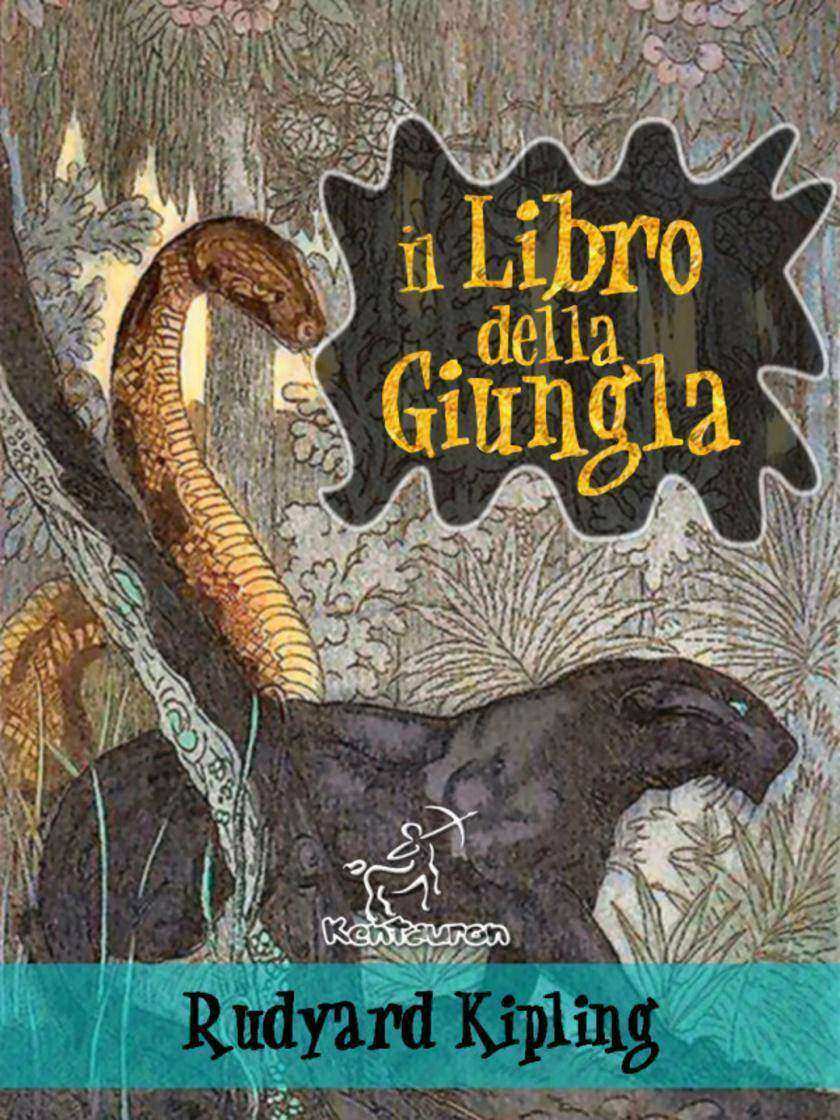
Il libro della giungla
¥4.58
Il libro della giungla (The Jungle Book) è una raccolta di racconti dello scrittore Premio Nobel per la Letteratura Rudyard Kipling; pubblicati, mentre viveva nel Vermont, su vari giornali e riviste tra il 1893 e il 1894. Questa pubblicazione contiene 89 illustrazioni di Maurice de Becque e altri disegnatori, fra cui anche il padre stesso dell'autore, John Lockwood Kipling.I più conosciuti tra questi racconti rimangono difatti le storie che narrano le avventure del "cucciolo d'uomo" di nome Mowgli, abbandonato nella giungla indiana e adottato da un branco di lupi.Tra gli altri racconti, i più noti sono probabilmente Rikki-tikki-tavi (la storia di un'eroica mangusta) e Toomai degli elefanti (la storia di un giovane conduttore di elefanti). Il secondo libro della giungla seguì nel 1895, comprende, tra le altre, ulteriori cinque storie che vedono protagonista il piccolo Mowgli.I racconti del libro della giungla che narrano le avventure di Mowgli (detti per l'appunto storie di Mowgli) sono utilizzati come ambientazione dai lupetti, la fascia d'età più giovane del movimento scout. Quest'uso venne approvato da Rudyard Kipling dopo una richiesta diretta da parte di Robert Baden-Powell, il fondatore dello scautismo.Attraverso i vari personaggi della storia (positivi e no) vengono incarnati qualità o difetti soggettivi. Questo particolare metodo viene definito la "morale per tipi". Per esempio Tabaqui rappresenta il disordine, la trasandatezza e la viltà, Baloo rappresenta la saggezza e la spiritualità individuale, Bagheera rappresenta l'agilità e la forza fisica, Shere Khan la prepotenza, Kaa la bontà d'animo e la cortesia. I pregi dei personaggi positivi sono inoltre riassunti in alcune frasi chiamate parole maestre, queste frasi sono anch'esse tratte dal libro della giungla ed insegnate ai lupetti.
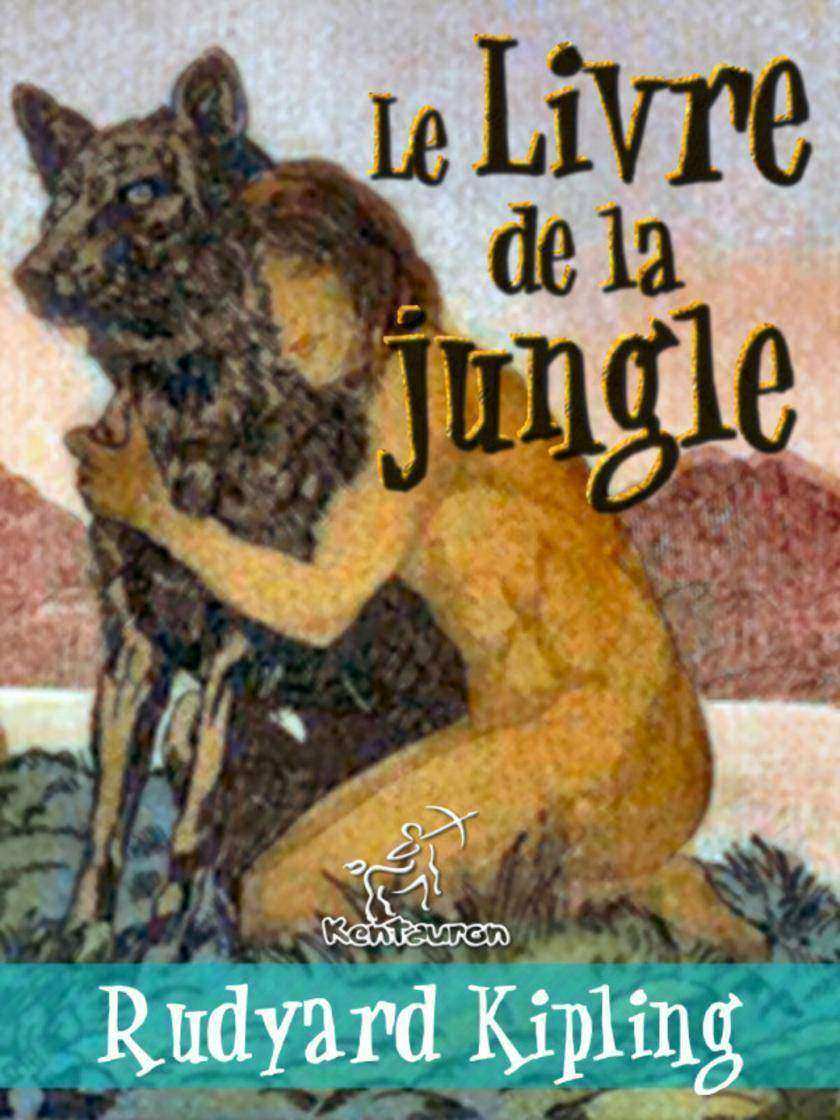
Le Livre de la jungle
¥4.58
Le Livre de la jungle (The Jungle Book) est un recueil de nouvelles écrit par Rudyard Kipling lors d’un séjour de quatre années dans le Vermont, aux ?tats-Unis. Kipling avait auparavant vécu pendant plus de six ans en Inde, d'où est puisée l'inspiration de la majorité de ses nouvelles. La traduction fran?aise la plus connue est due à Robert d'Humières et Louis Fabulet. Le Livre de la Jungle est un recueil de nouvelles dont chacune raconte une histoire qui se passe dans la jungle, forêt de l’Inde où vivent des animaux sauvages typiques du pays, ainsi que des hommes. Les nouvelles se succèdent dans un ordre qui n’est pas nécessairement chronologique, et permettent de découvrir par différents c?tés la destinée de Mowgli petit d’homme, son éducation, la vie sociale du monde des animaux, et les lois de la Jungle auxquelles tous sont soumis, les hommes aussi. Les histoires ne se déroulent pas toutes dans la jungle indienne (ainsi, l'histoire des phoques se déroule en Alaska et mentionne les lois de la plage) et ne font pas toutes intervenir Mowgli. ? la fin de chaque nouvelle, un court chant en vers, en rapport avec cette dernière, offre un pendant poétique. Par exemple, le Chant de Mowgli à la suite de Au tigre ! au tigre !, le Chant de Darzee à la suite de Rikki-Tikki-Tavi, etc.

Das Dschungelbuch
¥4.66
Illustrierte Ausgabe (mit s?mtliche über 89 Illustrationen von Maurice de Becque und andere Illustratoren). Das Dschungelbuch (englischer Originaltitel The Jungle Book) ist eine Sammlung von Erz?hlungen und Gedichten des britischen Autors Rudyard Kipling. Der erste Band erschien 1894, der zweite 1895 unter dem Titel The Second Jungle Book (?Das zweite Dschungelbuch“); seither werden die Erz?hlungen der beiden B?nde zumeist gemeinsam publiziert, oft als The Jungle Books (?Die Dschungelbücher“). Die bekanntesten Erz?hlungen darin handeln von Mowgli (in verschiedenen ?bersetzungen auch Maugli oder Mogli geschrieben), einem Findelkind, das bei Tieren im indischen Dschungel aufw?chst. Die Geschichten über Mowgli stehen dem Genre des Entwicklungsromans nahe, da sie Mowglis Erwachsenwerden und Bewusstwerdung vom verspielten Kind bis hin zum Herrn über die Tierwelt aufzeigen. Mowgli muss lernen, dass die Gesetze der Natur hart sind und ein hohes Ma? von Verantwortung fordern. Im Kampf mit den Kr?ften der Natur, mit den Tieren und mit den Menschen reift das Kind zum selbstbewussten Jugendlichen. Trotz mancherlei kritischer Betrachtungen – man hat in der Darstellung der Charaktere und der Betonung des Gesetzes des Dschungels Kiplings positive Stellung zum Kolonialismus erblickt – ist die Bedeutung des Dschungelbuches für die sp?tere literarische Entwicklung sowie seine Stellung als eines der bekanntesten und erfolgreichsten Jugendbücher der Welt kaum zu übersch?tzen. Joseph Rudyard Kipling (* 30. Dezember 1865 in Bombay; ? 18. Januar 1936 in London) war ein britischer Schriftsteller und Dichter. Seine bekanntesten Werke sind Das Dschungelbuch und der Roman Kim. Au?erdem schrieb er Gedichte und eine Vielzahl von Kurzgeschichten. Kipling gilt als wesentlicher Vertreter der Kurzgeschichte und als hervorragender Erz?hler. Seine Kinderbücher geh?ren zu den Klassikern des Genres. 1907 erhielt er, noch keine 42 Jahre alt, als erster englischsprachiger Schriftsteller den Literaturnobelpreis; den Rekord als jüngster Literaturnobelpreistr?ger h?lt er bis heute. Verschiedene andere Ehrungen wie die Erhebung zum Poet Laureate und in den Adelsstand lehnte er ab. ?bersetzt von Curt Abel-Musgrave und andere ?bersetzer. About this edition This Kentauron edition has been professionally formatted for e-readers with a linked table of contents. We hope you’ll share this book with your friends, neighbors and colleagues and can’t wait to hear what you have to say about it. Kentauron is dedicated to helping everyone develop a lifetime love of reading, no matter what form it takes. Also available as English-German, French-German, German-Italian, English-French, English-Italian, and French-Italian bilingual parallel text editions, and single language editions. Sign up for the Kentauron Publishing Newsletter here: http://www.kentauron.com/newsletters
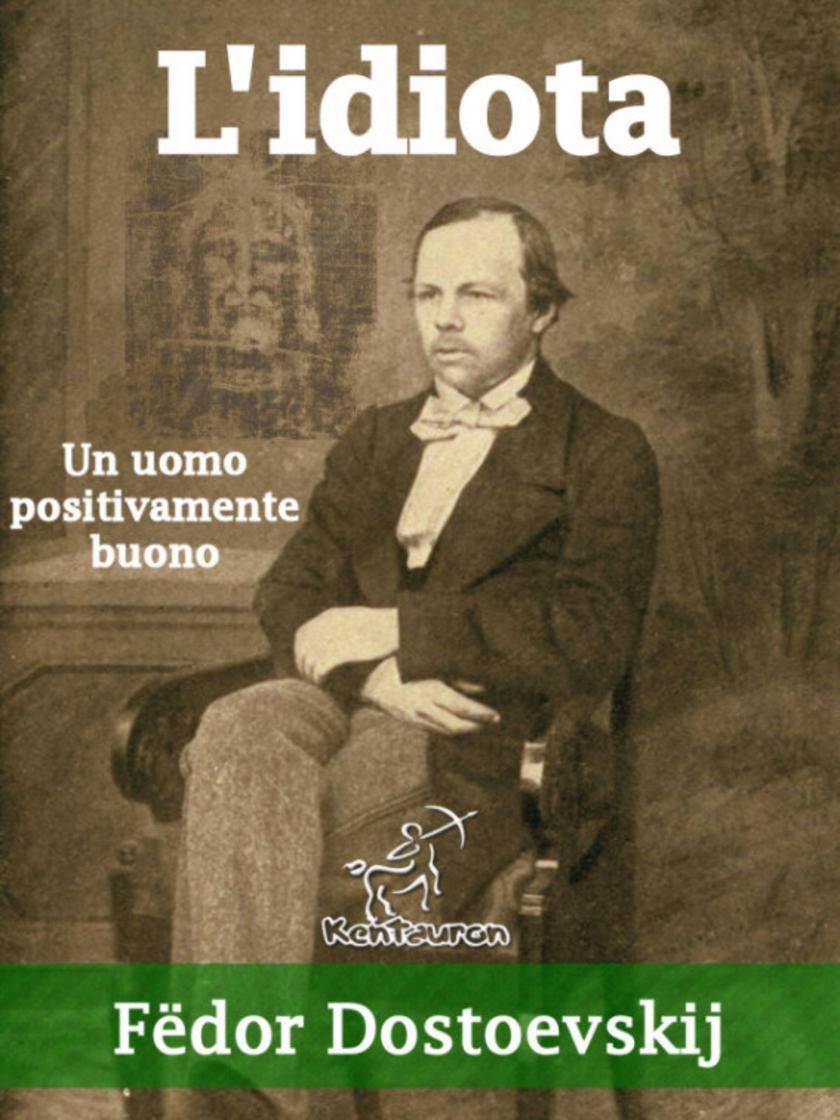
L'idiota: “Un uomo positivamente buono”
¥4.66
L'idiota (in russo: Идиот, Idiot) è un romanzo di F?dor Michajlovi? Dostoevskij. Considerato uno dei massimi capolavori della letteratura russa, vuole rappresentare “un uomo positivamente buono”, un Cristo del XIX secolo. La stesura fu contemporanea all'esilio dello scrittore, dovuto ai debiti: ebbe inizio a Ginevra nel settembre del 1867, proseguì a Vevey (sul lago di Ginevra), a Milano, e terminò nel gennaio del 1869 a Firenze. Una targa al numero 18 di Piazza de' Pitti ricorda la permanenza dell'autore nel palazzo per quasi un anno. L'opera nel frattempo uscì a puntate dal 1868 sulla rivista Russkij vestnik (il Messaggero Russo), mentre fu presentata in forma unica l'anno successivo. In una lettera del 1867 indirizzata allo scrittore Apollon Nikolaevi? Majkov, Dostoevskij descrisse il nucleo poetico del romanzo a cui stava lavorando: ?Da tempo mi tormentava un’idea, ma avevo paura di farne un romanzo, perché è un’idea troppo difficile e non ci sono preparato, anche se è estremamente seducente e la amo. Quest’idea è raffigurare un uomo assolutamente buono. Niente, secondo me, può essere più difficile di questo, al giorno d’oggi soprattutto.? ? importante sottolineare come l'aggettivo "buono" usato nella lettera fosse nell'originale russo "prekrasnyi", che indica lo splendore della bellezza e della bontà insieme. L'opera ha avuto diversi adattamenti teatrali, cinematografici e televisivi. Nel corso del romanzo è più volte citato e discusso dai personaggi, il quadro di Hans Holbein il Giovane, "Il corpo di Cristo morto nella tomba". Dostoevskij aveva visto il dipinto nel 1867 a Basilea e ne era rimasto fortemente impressionato. Traduzione di Federigo Verdinois (1927). Federigo Verdinois (Caserta, 2 luglio 1844 – Napoli, 11 aprile 1927) è stato un giornalista, scrittore e traduttore italiano. F?dor Michajlovi? Dostoevskij (in russo: Фёдор Михайлович Достоевский; Mosca, 11 novembre 1821 – San Pietroburgo, 9 febbraio 1881) è stato uno scrittore e filosofo russo.? considerato, insieme a Tolstoj, uno dei più grandi romanzieri e pensatori di tutti i tempi.
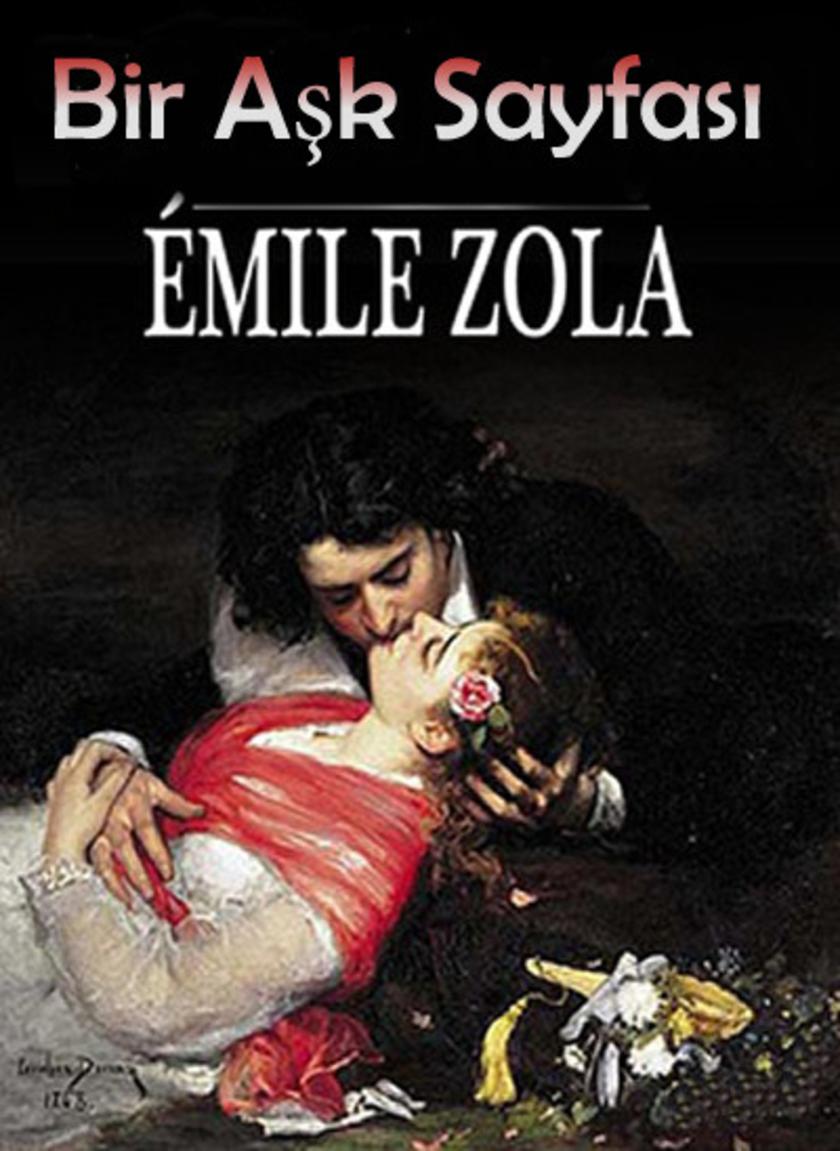
Bir A?k Sayfas?
¥4.74
Bir A?k Sayfas?




 购物车
购物车 个人中心
个人中心



